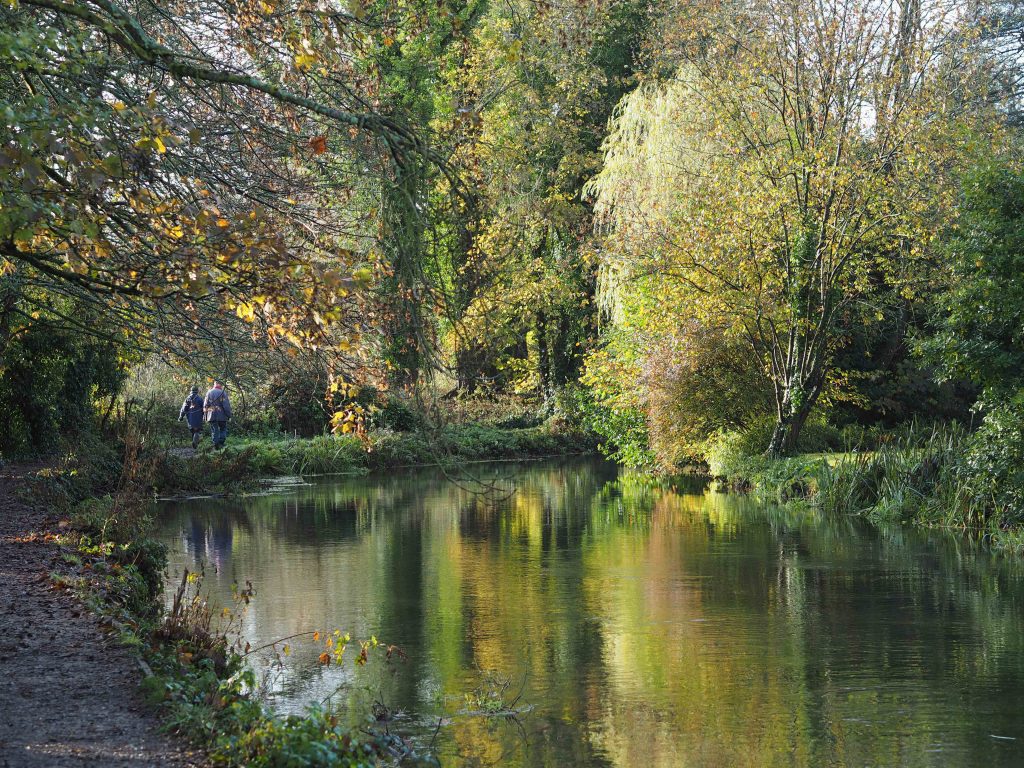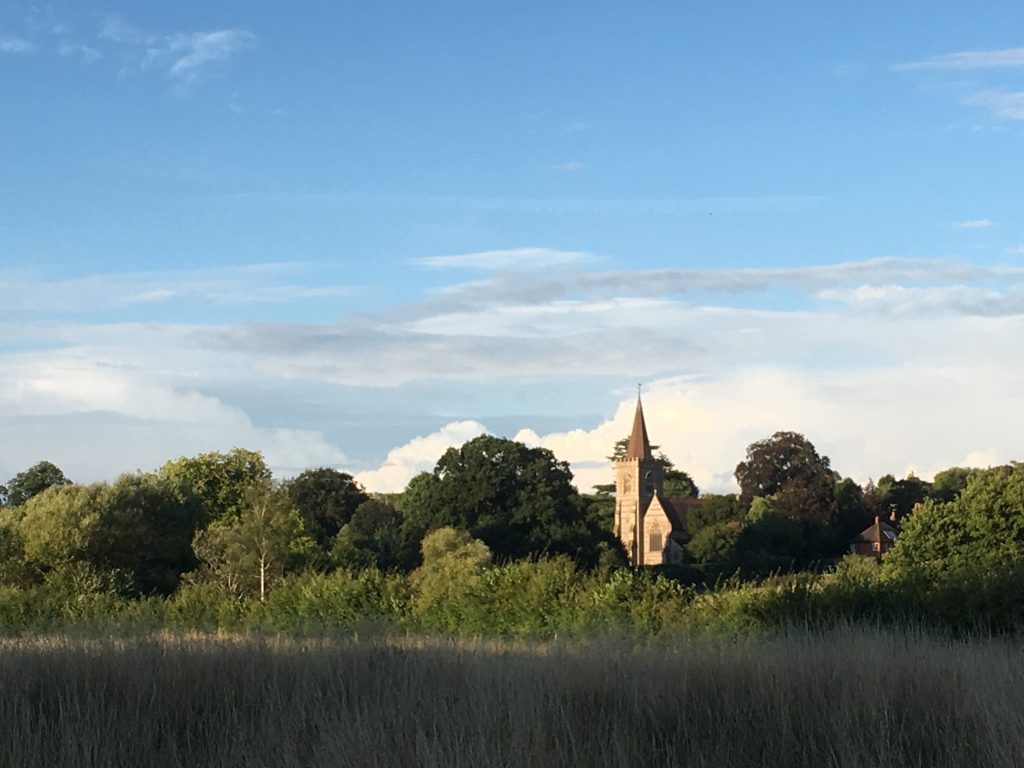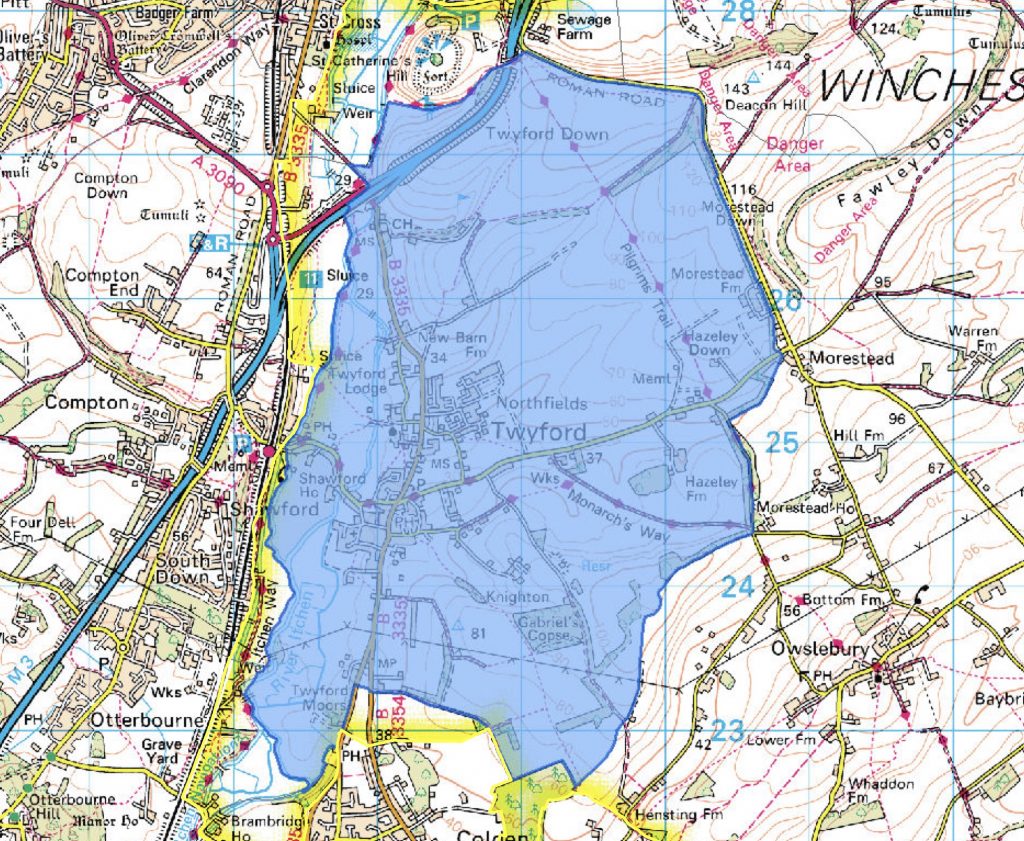Twyford – an overview
Twyford is defined by its landscape and heritage, by the built environment and by the people who live in the Parish. Most recently, its inclusion within the South Downs National Park establishes its role in policy terms.

Twyford has a strong sense of place, continuity and community. It is one of the most popular villages in Hampshire because of its range of amenities, its outstanding environment, proximity to the historic city of Winchester and good road and rail access to London and the South.

Twyford’s downland landscape gives it a rich biological diversity. The River Itchen and much of its water meadows are of European and national importance. Twyford has good areas of downland which have survived without ploughing, especially Twyford Down, Hockley Golf Course and Watley Down. There are ancient woodlands at Gabriel’s Copse, Cockscomb Hill Copse, Roundbushes Copse and Hazeley Copse. Around the village and within it are small fields, open spaces and large gardens – the historic setting of the ancient village.

Twyford has an outstanding heritage. The village shows evidence of continuous occupation, perhaps as far back as the Bronze Age (2000 BC). The church is thought to stand on a ritual site from the Iron Age (1200 BC). An early Saxon cemetery with 6th Century burial goods was discovered in the village in 2008; the written records date from about 900 AD and are continuous from 1108 AD. There are seven Ancient Monuments within the parish and around 70 Listed Buildings.

